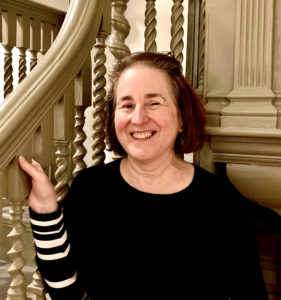How does an organization of just over a one-million-dollar budget manage five historic properties, a museum, an active practice of supporting research by scholars and others, a unique living history program, and a menu of tours, programs and lectures for guests of all ages?
This has been the NHS’ challenge during my tenure as Executive Director. Over the years we have researched, planned and experimented with a number of strategies and approaches. We have met with difficulties and disappointments as well as achievements and successes. While I will not suggest that we have a replicable model for how to do business, here are some things that we do know.
Our budget size means that we have only a dozen core staff members, each one of whom has a pretty large portfolio. Many people think they would like to work for a non-profit because surely the pace is more leisurely, and the standards lower, when you are not focused on the profit motive. These folks would, and do, find their expectations upended at NHS. We are just as driven – towards excellence and towards financial sustainability – as any active small business. But our bottom line is public service, not profit. The question of whom we have served, and whether we have done so to the best of our ability, is a powerful driver for those who choose to do this work. It is not by any measure easier to work at a non-profit, as the imperative to do good sits on top of the need to earn and raise enough money to be able to perform at a high level. Recognizing that, and ensuring that staff members have what they need to maintain momentum and morale, is necessary to our success.
It is also hard to claim to be committed to the public good and not also commit to the wellbeing of our own staff. One of the decisions that this Board made at the beginning of the pandemic was reflective of this. No one on permanent staff at NHS was furloughed or laid off. This was made possible by an awareness that our commitment to our staff and the community needed to be wholistically expressed; we would take no steps that did not recognize that our staff members were the engine of our achievements, and that the health of our community was, in the long term, as important as our bank account to our long-term success.
We are an audience-facing public history organization. While we do collect, preserve and study, we believe that those activities are essential not for themselves, or for some distant and unknowable future, but for the benefit that can be provided to the public today. We make decisions about staffing and the deployment of resources that support this approach. For example, a large proportion of our staff are devoted to the collections, but they are focused on facilitating research by others, not doing it themselves. And on assembling information about what we hold and making it available to the public, not on scouring the universe for more things. This allows us to be outward facing in two directions: taking the scholarship done by others, then interpreting and disseminating it to the public.
This external focus also helps us to understand that we can do more, and reach many more people, through collaborative efforts. This starts even with the basic care and management of our assets; we have shared stewardship arrangements that allow us to manage the Brick Market and the Colony House without owning them, and to own the Green End Fort without having to conduct its routine maintenance (because our partners do). We are currently exploring a shared stewardship arrangement for the Wanton Lyman Hazard House and are open to more. Our most successful exhibition in years was held with the Audrain Automobile Museum this year, and we are currently working on an exhibition project with the Rhode Island Historical Society for 2022.
Finally, we focus regularly on remaining nimble so that we can continue to serve our audiences as the world changes, sometimes with dizzying speed. We do this by striking a deliberate balance between process and progress, and through a focus on our online presences, especially including the Know Your History page on our website.
These approaches to the work serve us well. But we are certainly not without challenges as we look ahead. Our audiences are not as broad, or diverse, as they need to be. This includes race, age, geography and economic status. Some of our resources remain underused, and we continue to work towards a budget that is both economically efficient and appropriately fair to those who work for us.
The work to make this organization as high functioning as possible, at the same time that we focus on conducting our mission, makes our days here very full. And fun. And, for all involved, deeply meaningful and satisfying.
Ruth Taylor,
Executive Director
